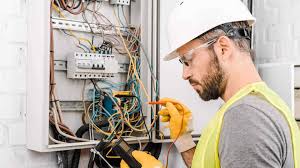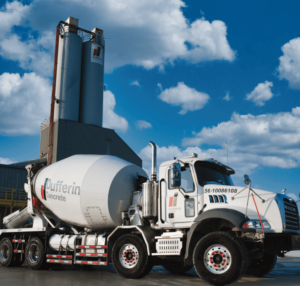How to Optimize Your Electrical Power Supply Design for Maximum Efficiency
Optimizing electrical power supply design goes beyond just cutting energy costs—it’s about ensuring sustainability, reliability, and adaptability in an increasingly digital world. As industries shift toward smart, connected systems, efficient power management is crucial for long-term success.
Whether you’re upgrading an existing setup or designing a new system, prioritizing key factors like load analysis, smart power distribution, energy-efficient components, and automation can enhance performance and minimize waste. Integrating renewable energy sources and implementing redundancy measures also play a pivotal role in maintaining operational resilience.
By using future-ready power solutions, businesses can achieve peak efficiency, reduce costs, and contribute to a more sustainable energy landscape. The journey to optimized power supply starts now—are you ready?
1. Understanding Power Supply Design Fundamentals
Before diving into optimization, it’s crucial to understand the fundamental components of power supply design. A well-structured electrical power supply comprises:
- Transformers: To step up or step down voltage levels.
- Switchgear and Circuit Protection: To manage loads safely and prevent system failures.
- Power Distribution Panels: To distribute power efficiently across various circuits.
- Energy Storage Solutions: Such as UPS systems and batteries for backup power.
Optimizing power supply efficiency starts with selecting the right components and ensuring they work harmoniously within your system.
2. Prioritizing Load Analysis and Demand Forecasting
A deep understanding of your power demand is essential for efficiency. Conducting a load analysis helps determine:
- The peak and average power consumption.
- The distribution of loads across different circuits.
- Power factor considerations for improved system performance.
By forecasting demand trends and analyzing historical data, you can design a power supply system that meets current needs while accommodating future expansion without excessive energy waste.
3. Implementing Smart Power Distribution Strategies
An optimized electrical power supply design incorporates smart distribution strategies, including:
- Balanced Load Distribution: Ensuring even power distribution reduces the risk of overloading certain circuits.
- Low Voltage Distribution: Implementing efficient low voltage distribution solutions reduces energy loss and improves overall system efficiency.
- Zoning Strategies: Dividing power loads into zones for better control and maintenance.
- Demand Response Systems: Adjusting power supply dynamically based on real-time usage.
By leveraging advanced power distribution techniques, industries can significantly enhance system efficiency and reliability.
4. Choosing Energy-Efficient Components
The selection of energy-efficient components plays a crucial role in power supply optimization. Key considerations include:
- High-Efficiency Transformers: Reducing losses in power conversion.
- Energy-Efficient Motors and Drives: Optimizing performance and minimizing heat generation.
- Power Factor Correction Devices: Enhancing power usage efficiency and reducing strain on the grid.
- LED Lighting and Smart HVAC Systems: Lowering energy consumption for non-core electrical loads.
Investing in energy-efficient components might have a higher upfront cost, but the long-term savings and sustainability benefits make it a worthwhile investment.
5. Integrating Renewable Energy Sources
Sustainable power supply design isn’t just about efficiency—it’s also about reducing dependency on conventional power grids. Integrating renewable energy sources like solar panels and wind turbines can:
- Reduce operational costs in the long run.
- Provide backup power during grid failures.
- Decrease your carbon footprint and align with sustainability goals.
Hybrid power systems, which combine renewable sources with traditional electrical grids, are becoming increasingly popular in industrial applications.
6. Using Automation and IoT for Smart Power Management
The rise of IoT and automation is transforming power supply optimization. By integrating smart sensors, AI-driven analytics, and automation systems, businesses can:
- Monitor real-time power consumption.
- Predict maintenance needs and prevent failures.
- Automate energy-saving protocols.
- Enhance load balancing with AI-driven adjustments.
Smart power management systems not only increase efficiency but also provide valuable insights for future optimizations.
7. Reducing Energy Loss Through Power Quality Management
Energy loss is one of the biggest challenges in power supply systems. To minimize it:
- Use High-Quality Conductors: Lower resistance reduces energy loss.
- Minimize Voltage Drops: Use properly sized wiring and efficient power routing.
- Reduce Harmonics: Use filters and proper grounding to maintain power quality.
- Optimize Cooling and Ventilation: Preventing overheating enhances equipment longevity and efficiency.
By addressing power quality concerns, industries can ensure a more stable and efficient power supply.
8. Implementing Redundant and Backup Systems
Reliability is just as important as efficiency. A well-optimized electrical power supply should include:
- Uninterruptible Power Supplies (UPS): To keep operations running during short outages.
- Backup Generators: To provide power during extended outages.
- Redundant Power Lines: Ensuring continuity in case of primary supply failure.
A combination of redundancy and real-time monitoring ensures that your system stays operational even in the face of disruptions.
9. Regular Maintenance and Continuous Optimization
Even the most well-designed electrical power supply requires ongoing maintenance. Routine inspections help:
- Identify potential failures before they occur.
- Optimize system performance with periodic adjustments.
- Extend the lifespan of critical components.
Additionally, keeping up with emerging technologies and regulatory standards ensures that your system remains cutting-edge and compliant.
10. Training and Skill Development
A well-optimized power supply system is only as good as the people managing it. Investing in training programs for electrical engineers and maintenance staff can:
- Improve system monitoring and troubleshooting skills.
- Ensure compliance with safety regulations and best practices.
- Enhance efficiency by reducing downtime due to human errors.
Encouraging continuous learning and staying updated with industry advancements will help businesses maintain an efficient and resilient power supply infrastructure.
Final Thoughts
Optimizing your electrical power supply design is an ongoing journey, not a one-time effort. Smart distribution, energy-efficient components, renewable energy integration, and automation are the key drivers of an effective power supply system. Whether your operations are in manufacturing, commercial infrastructure, or industrial applications, an optimized system leads to efficiency, sustainability, and cost savings.
Embracing low-voltage distribution, predictive maintenance, and AI-powered power management ensures future-readiness. The role of automation in energy conservation cannot be overstated, offering dynamic load balancing and real-time adjustments. Furthermore, incorporating backup power sources such as UPS and generators safeguards business continuity during unexpected outages.
The future of power supply design lies in adopting forward-thinking solutions today. Investing in innovative, energy-efficient technologies will keep your business competitive in an evolving energy landscape. The question is—are you prepared to lead the charge??










